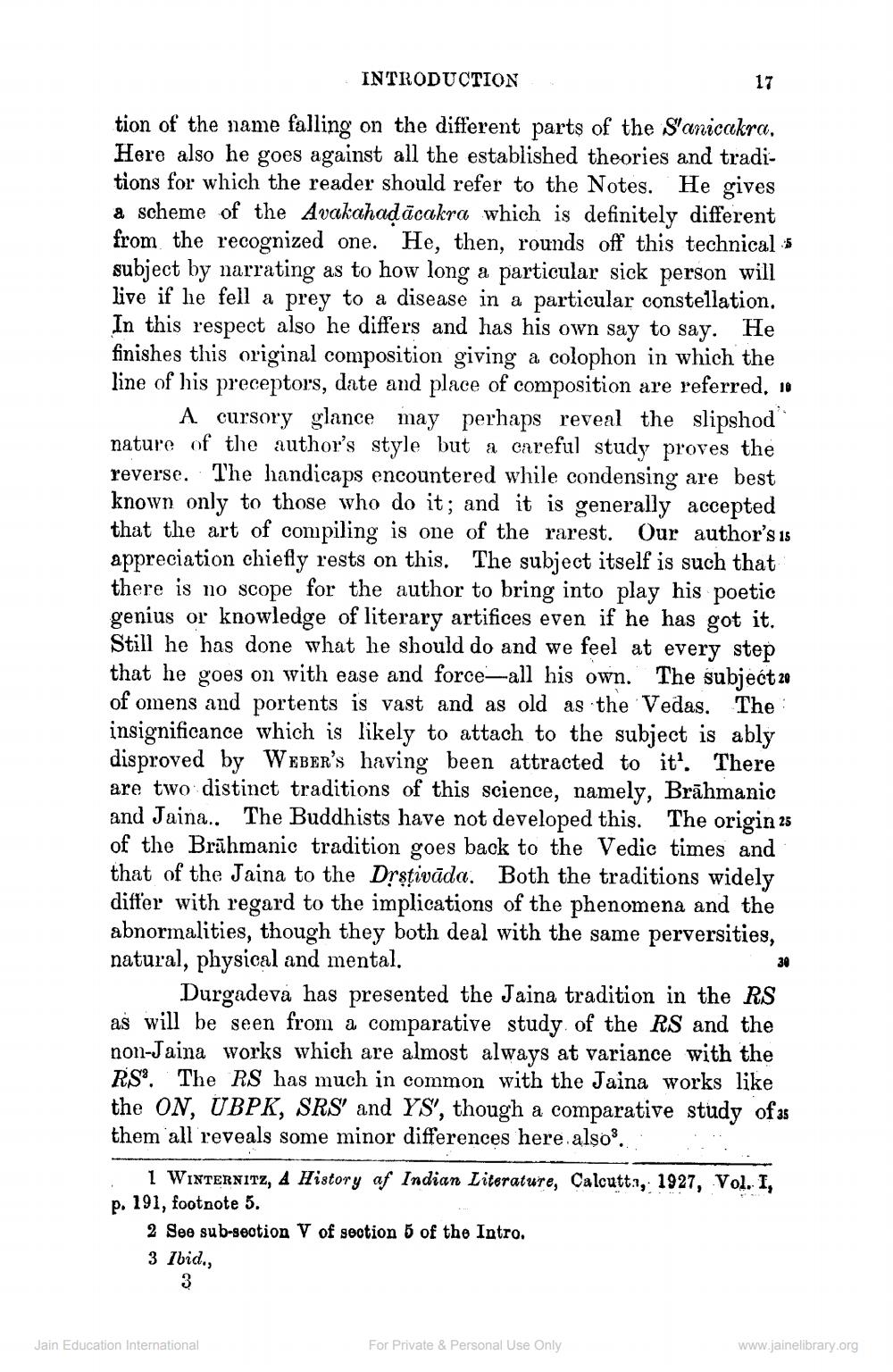________________
INTRODUCTION
tion of the name falling on the different parts of the S'anicakra, Here also he goes against all the established theories and traditions for which the reader should refer to the Notes. He gives a scheme of the Avakahadācakra which is definitely different from the recognized one. He, then, rounds off this technical :5 subject by narrating as to how long a particular sick person will live if he fell a prey to a disease in a particular constellation. In this respect also he differs and has his own say to say. He finishes this original composition giving a colophon in which the line of his preceptors, date and place of composition are referred, 10
A cursory glance may perhaps reveal the slipshod nature of the author's style but a careful study proves the reverse. The handicaps encountered while condensing are best known only to those who do it; and it is generally accepted that the art of compiling is one of the rarest. Our author's 1s appreciation chiefly rests on this. The subject itself is such that there is no scope for the author to bring into play his poetic genius or knowledge of literary artifices even if he has got it. Still he has done what he should do and we feel at every step that he goes on with ease and force-all his own. The subject zo of omens and portents is vast and as old as the Vedas. The insignificance which is likely to attach to the subject is ably disproved by WEBER's having been attracted to it. There are two distinct traditions of this science, namely, Brāhmanic and Jaina.. The Buddhists have not developed this. The origin 25 of the Brāhmanic tradition goes back to the Vedic times and that of the Jaina to the Drstivāda. Both the traditions widely differ with regard to the implications of the phenomena and the abnormalities, though they both deal with the same perversities, natural, physical and mental.
Durgadeva has presented the Jaina tradition in the RS as will be seen from a comparative study of the RS and the non-Jaina works which are almost always at variance with the RS. The RS has much in common with the Jaina works like the ON, UBPK, SRS and YS', though a comparative study of as them all reveals some minor differences here also
1 WINTERNITZ, A History af Indian Literature, Calcutta, 1927, Vol. I, p. 191, footnote 5.
2 See sub-section V of section 5 of the Intro. 3 Ibid.,
30
Jain Education International
For Private & Personal Use Only
www.jainelibrary.org




